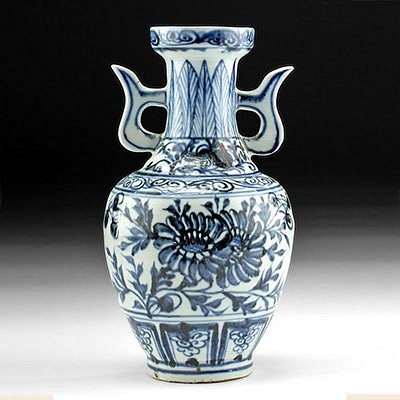19th C. Mali Bamana Wood Ntomo Mask with Cowries
Lot 98
About Seller
Artemis Gallery
686 S Taylor Ave, Ste 106
Louisville, CO 80027
United States
Selling antiquities, ancient and ethnographic art online since 1993, Artemis Gallery specializes in Classical Antiquities (Egyptian, Greek, Roman, Near Eastern), Asian, Pre-Columbian, African / Tribal / Oceanographic art. Our extensive inventory includes pottery, stone, metal, wood, glass and textil...Read more
Estimate:
$3,500 - $5,000
Absentee vs Live bid
Two ways to bid:
- Leave a max absentee bid and the platform will bid on your behalf up to your maximum bid during the live auction.
- Bid live during the auction and your bids will be submitted real-time to the auctioneer.
Bid Increments
| Price | Bid Increment |
|---|---|
| $0 | $25 |
| $300 | $50 |
| $1,000 | $100 |
| $2,000 | $250 |
| $5,000 | $500 |
| $10,000 | $1,000 |
| $20,000 | $2,500 |
| $50,000 | $5,000 |
| $100,000 | $10,000 |
| $200,000 | $20,000 |
About Auction
By Artemis Gallery
Nov 19, 2020
Set Reminder
2020-11-19 10:00:00
2020-11-19 10:00:00
America/New_York
Bidsquare
Bidsquare : Ancient Treasures & Holiday Jewelry
https://www.bidsquare.com/auctions/artemis-gallery/ancient-treasures-holiday-jewelry-6035
Travel around the world and back in time and be amazed at the treasures you will find! Antiquities from Egypt, Greece, Italy and the Near East, Asian, Pre-Columbian, African/Tribal/Oceanic, Native American, Spanish Colonial, Fine Art, much more. Shop early for the holidays! Artemis Gallery info@artemisgallery.com
Travel around the world and back in time and be amazed at the treasures you will find! Antiquities from Egypt, Greece, Italy and the Near East, Asian, Pre-Columbian, African/Tribal/Oceanic, Native American, Spanish Colonial, Fine Art, much more. Shop early for the holidays! Artemis Gallery info@artemisgallery.com
- Lot Description
Western Africa, Mali, Bamana peoples, ca. late 19th to early 20th century CE. Perhaps the oldest and most important Ntomo masks we have ever handled, carved from hardwood and presenting a wonderful visage that is densely adorned with rows of cowrie shells and with petite ruby red abrus seeds to accentuate the presentation. The generally oval shape of the face and the appearance of horns or spikes above constitute and aesthetic that is distinct to Ntomo masks. Size: 8.375" W x 26.25" H (21.3 cm x 66.7 cm)
According to Susan Elizabeth Gagliardi, Assistant Professor of Art History, Emory University, "Ntomo is one of many associations historically found in communities identified as Bamana, and its membership has usually consisted of young boys in the process of learning adult responsibilities. Not every Bamana community has always maintained or continues to maintain an Ntomo association, so the phenomenon is neither universal nor timeless (Colleyn 2009: 28). Reasons for staging a Ntomo performance have also varied, and performances have occurred at popular gatherings and other important events (Colleyn 2009: 28). Observers also report that Ntomo performers wear full-body masks, each consisting of a wooden face mask and cloth outfit." (Metropolitan Museum of Art website, 2016)
For another example of a Ntomo mask covered in cowrie snail shells, please see The Metropolitan Museum of Art, accession number 1978.412.368.
Provenance: ex-private Dr. Peter Horvath collection, Massachusetts and Florida, USA; purportedly Duke University Art Museum, deaccessioned, 1970s
All items legal to buy/sell under U.S. Statute covering cultural patrimony Code 2600, CHAPTER 14, and are guaranteed to be as described or your money back.
A Certificate of Authenticity will accompany all winning bids.
We ship worldwide and handle all shipping in-house for your convenience.
#156720Showing losses and wear, with light encrustations, otherwise in excellent condition with heavy patina from decades of use.Condition
- Shipping Info
-
All shipping is handled in-house for your convenience. Your invoice from Artemis Gallery will include shipping calculation instructions. If in doubt, please inquire BEFORE bidding for estimated shipping costs for individual items.
-
- Buyer's Premium



 EUR
EUR CAD
CAD AUD
AUD GBP
GBP MXN
MXN HKD
HKD CNY
CNY MYR
MYR SEK
SEK SGD
SGD CHF
CHF THB
THB














